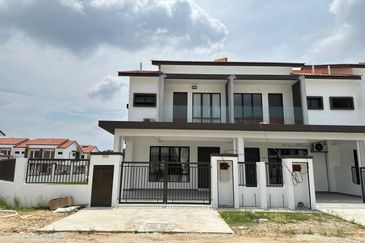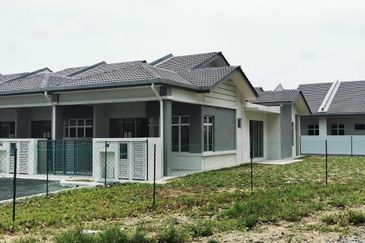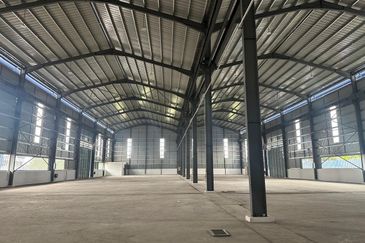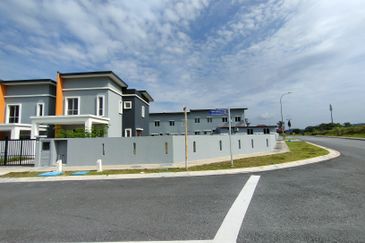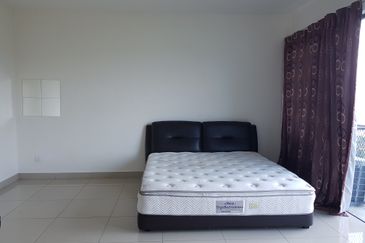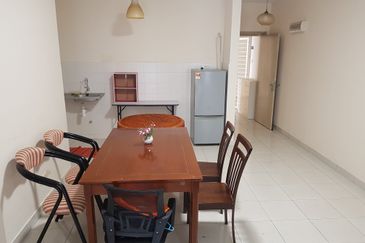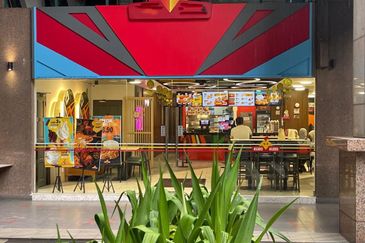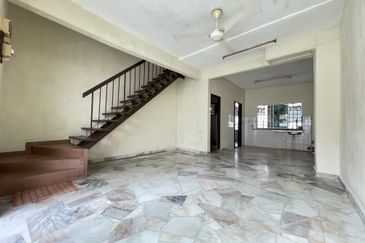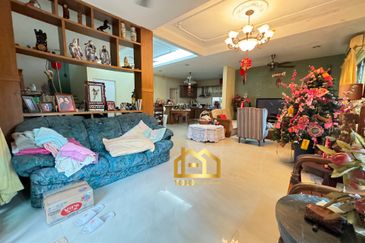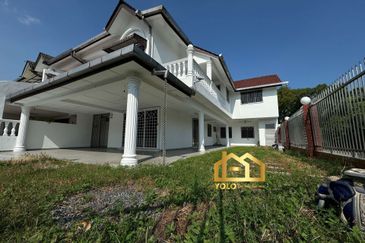
Bringing over 25 years of experience in the property development industry, Mohd. Salem Kailany joined UDA Holdings Bhd as the President/CEO on Sept 20, 2019.
Prior to the appointment, he had been the CEO of PNB Development Sdn Bhd. He had also been one of the directors and an audit committee member of Felcra Bhd, and chairman of Felcra Properties Sdn Bhd.
“I joined UDA with the mission to continue the company legacy and objective, which are urban development, increasing the bumiputera ownership in the urban space and providing a good living environment to the people,” Salem tells EdgeProp Malaysia in an interview.
Once he stepped into the company, Salem spent his first 100 days visiting all the project sites, holding dialogues with colleagues on the ground and familiarising himself with the company culture.

When he finally settled down in his office, all ready to craft the future planning of UDA, he found himself facing the beginning of the hurdle of hurdles – the Covid-19 pandemic. It was just then the coronavirus started spreading across the world. The bad news struck him like a bolt out of the blue – in fact, firsthand.
“In Feb 2020, I was tested positive for Covid-19. I had to be hospitalised for 11 days. By the time I was discharged on March 14, it was quite close to the [first] MCO (Movement Control Order), which started on March 18,” Salem recalls.
The lockdowns and the rampant onslaught of the coronavirus globally have caught many off guard, but taking the bull by the horns, Salem did not let it stop him from implementing his plans to further strengthen UDA’s market presence in Malaysia.
“The top management was ambitious and optimistic. We had a few big things planned for 2020 before the MCO kicked in, such as strengthening our cashflow position, rebranding, reviewing and fine-tuning our product mix so that we could penetrate different market segments and more. [However], as the pandemic changed our ways of life, we had to adjust ourselves and adapt to the market changes while holding firmly to our company core values,” he shares.

The core values of UDA are abbreviated as DOTS, which stands for Do the right thing, Overcome challenges, Together we can, and Strive for excellence.
“UDA is not a company that only focuses on profit. We were established 50 years ago with the mission to enrich lives by delivering best-value products and services, and to be a preferred organisation with diversified property and asset management businesses,” Salem shares.
Founded in 1971, UDA was formerly known as the Urban Development Authority (UDA). It embarked on the advancement of the nation’s planned urban development for commercial and residential purposes in Malaysia.

Fast forward to 28 years after its establishment, it became UDA Holdings Bhd, and was subsequently delisted from Bursa Malaysia to become a wholly-owned subsidiary of Khazanah Nasional Bhd before being transferred to the Ministry of Finance in 2007. In 2018, UDA was placed under the stewardship of the Ministry of Entrepreneur Development and Cooperatives (MEDAC).
A quiet achiever in the industry
Being one of the oldest developers in Malaysia, Salem describes UDA as a capable but very shy company.
“One time I visited our newly completed project in Seberang Prai, Penang. It was a 43-storey building, one of the tallest in the area. However, someone I met told me he was pleasantly surprised that UDA was the builder. He had always known UDA to be an affordable housing developer,” Salem recounted smilingly.
“He was not the only one that remembers UDA as an affordable housing developer, because UDA has always been shy.”

In fact, UDA was the builder of many landmark buildings in the major cities of Malaysia, such as Menara Dayabumi, UBN Tower (UBN stands for UDA Bukit Nanas), Shangri-La Hotel Kuala Lumpur, Pudu Raya, Sinar Kota and Dataran Maybank in Bangsar.
UDA was also the developer of many familiar townships in the country, such as Taman Tun Dr Ismail (TTDI) and Bandar Tun Hussein Onn in KL, Taman Pauh Jaya in Penang, Bandar Baru UDA and Bandar UDA Utama in Johor, Taman Murni Perdana in Terengganu and Pelindung Heights in Kuantan, Pahang.
As at 2020, UDA has completed over 23,000 residential houses. It was also the pioneer in waqf land development, with its key development on the 3.75ha Taman Wakaf Setee Aisah in Penang.

Another little-known fact is that UDA is also a mall owner. As at 2020, the company has provided a combined net lettable area of over 1.8 million sq ft. Some of the malls are Angsana Johor Bahru Mall, UTC Angsana Seremban, UTC KL and Kompleks Pertama KL.
“We have built many landmark buildings but people hardly know that UDA have been the builder. This is a good and capable company. However, it is also very shy. In the past, we didn’t claim the success we achieved,” Salem notes.
He believes that UDA deserves more attention from the market. Therefore, enhancing the brand image is one of his missions in the next few years.
“We have redesigned our logo to make it sharper and stand out. We also have been engaging more with the public and target markets. We need to let them know who we are, what we have done and what we can do for them in the future,” he shares.
Sustainable management is not downsizing
Despites the challenging environment in 2020, UDA’s financial performance was an encouraging one. The company managed to register over RM300 million turnover and RM27 million profit.
“To be honest, we had expected a red report card in 2020 due to the challenging market. However, we managed to register some profit and completed a project in KL city centre called Legasi Kampung Bharu. The project was handed over in March this year.
“It is true that 2020 was a very challenging year, but it was also a very significant year for UDA. Because of all these challenges, the team and the company have actually come out stronger,” Salem highlights.
The better-than-expected result of 2020 has motivated Salem and the team to set a higher target this year by aiming for RM500 million turnover and RM50 million profit. The company is also looking to launch projects worth RM1 billion in gross development value (GDV).
To further unlock the company’s potential, Salem says it is important to set a clear target and direction for the team.
“Before I came on board, there had been speculations that I would be rightsizing the company. It was not true because I understand that cutting headcount is not a sustainable way to increase a company’s profit margin.”
He believes the team has great potential. He has chosen to continue to invest in and build up a strong team, and help the team refocus on enhancing productivity to make UDA a stronger company, so that no one will be retrenched.

By benchmarking itself against other competitors, Salem has set the target to achieve RM1 billion revenue in the next three to five years. He is also looking to acquire more landbank and seek development opportunities in the mature areas of major cities such as KL, Penang, Johor, Sabah and Sarawak.
“Property development is our bread and butter. It is currently contributing 70% of the revenue to UDA while asset management is contributing 30%. I think the 70:30 ratio is good. What I intend to do is to grow the size, from what we are now to more,” Salem says.
But how? What are Salem’s plans for UDA? Can these be realised in the current difficult business environment and uncertainty? Read his answers in EdgeProp Malaysia’s interview (excerpt edited for clarity) with Salem.
EdgeProp: How badly has the lockdown hit UDA? What are your solutions?
Salem: There are two core businesses of UDA – one being the property development, which contributes 70% of revenue. Another one is asset and facility management, which includes hotel and shopping mall business.
Last year, we forwent some profit and revenue to support our malls’ tenants and the hotel business. We gave rental waivers and discounts to make sure the businesses could stay afloat. We also forked out money to build Angsana Virtual Mall, an e-commerce platform for our mall tenants, so they were able to continue their businesses during lockdowns.

Compared with 2019, our turnover and profit have shrunk 40% and 60% to RM300 million and RM27 million respectively. Even so, it was actually still better than our expectation. We had expected a red report card for 2020.
Yes, although we could have earned more, I think it is the right thing to do to give financial support to our business partners and tenants. Simple logic – if we don’t provide any incentives during this hard times, our tenants may have to move out because they have no budget to pay the rent, and then our mall will have more empty spaces and lower footfall, and consequently affect our revenue in the long run.
It is lucky that UDA has a diversified business model, where we can support these incentives from other businesses that are relatively financially healthier, such as property development, the bread and butter of UDA.
EdgeProp: UDA has been associated with affordable housing. But you are also building higher-end projects. How do you reconcile the two directions?
Salem: We did a survey and found out only people who interact with us understand us. But for people on the street, we received a different perception. It showed that our brand image did not stand out and we lost the connection with the public.
We need to reconnect with our target market because we are not serving everyone yet. The team has to understand what the market needs and translate them into the product that the market wants. It is about meeting the need so the product could sell itself.
This is also why we are taking a different approach in marketing our latest residential project, Residensi 38 Bangsar. It is a mid- to high-end development located in the heart of Bangsar within walking distance to the Bangsar LRT (light rail transit) station. The selling prices range from RM700,000 to over a million.
Before we finalised the project details, we had engaged with our target buyers to understand their expectations on a project like this. We found out that the buyers of this market segment were looking for design and layout that were sustainable and flexible, hence the dual key layout design.
EdgeProp: What revenue are you targeting for this year? Your strategies to achieve this?
Salem: Initially, we had foreseen that 2021 would be another challenging year, but the market should be able to perform better than 2020. We were looking to achieve RM500 million turnover, but since we are in MCO once again, we are revising the target to slightly lower.
EdgeProp: What are the milestones you are looking at in the next few years?
Salem: We are now working hard to be among the top 10 developers of the country again. We were once in the top 10 club but dropped off a few years ago. We are now still quite far away from the RM1 billion turnover criteria but I believe we are on track. Hopefully in the next two to three years, we will be in the list once again.
EdgeProp: What is your outlook on the property sector?
Salem: Property is a necessity element in a society no matter in what times. The key is how to stand out from the peers and get picked by the buyer.
Take a look back to the history of the property development industry. It has always been on the up no matter in what times. As long as the population is growing, property will be in demand. As a developer, we need to interpret and translate those demands into our products to make sure what we provide is what the market needs.

During these difficult times, it is true that people may put big-ticket item purchases on hold, but let me remind you, property is not a liability but a tool to create wealth with.
With so many incentives given by the government under HOC (Home Ownership Campaign), it is a good chance to accumulate good household debts like property. It is also one particular household debt that would appreciate over time. If you take 2010 versus 2020, you will realise that property price has appreciated 5% to 7% annually.
EdgeProp: How do you see the market? What are buyers looking for?
Salem: Moving forward, I foresee that sustainable, as well as flexible and practical projects are in demand.
A home is more than just a shelter today. People spend more time living and working at home. We have to make sure that the property we are providing is flexible, healthy and sustainable – enough sunlight, good ventilation, open green spaces for residents to interact and to have social activities.
This story first appeared in the EdgeProp.my E-weekly on June 25, 2021. You can access back issues here.
Get the latest news @ www.EdgeProp.my
Subscribe to our Telegram channel for the latest stories and updates
TOP PICKS BY EDGEPROP
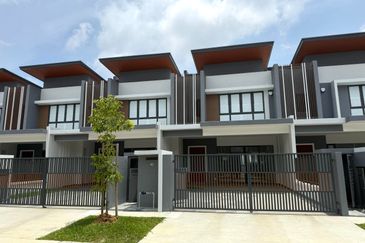
Jardin Residences @ Bandar Seri Coalfields
Sungai Buloh, Selangor
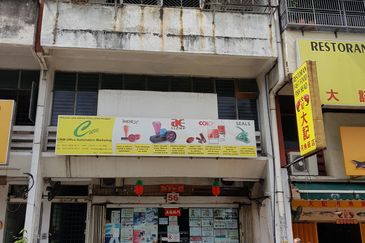
Sri Petaling KL First Floor Shop For Rent
Bandar Baru Sri Petaling, Kuala Lumpur
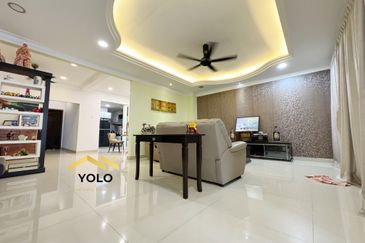
Taman Wawasan, Pusat Bandar Puchong
Puchong, Selangor
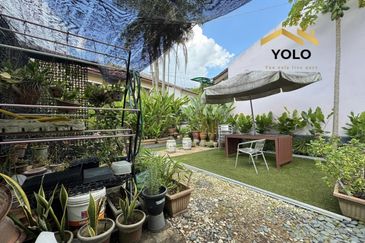
Taman Wawasan, Pusat Bandar Puchong
Puchong, Selangor
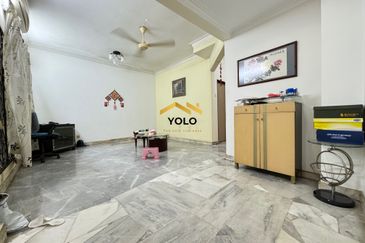
Taman Wawasan, Pusat Bandar Puchong
Puchong, Selangor
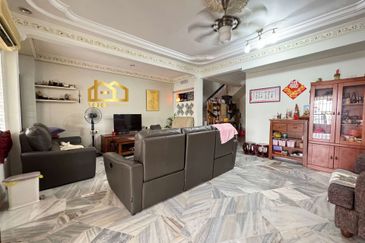
Taman Wawasan, Pusat Bandar Puchong
Puchong, Selangor


